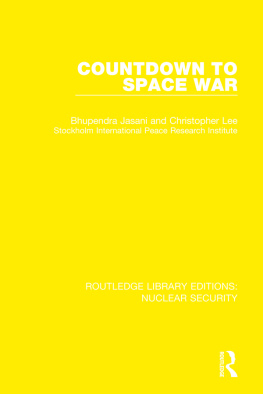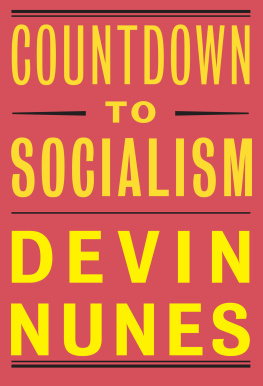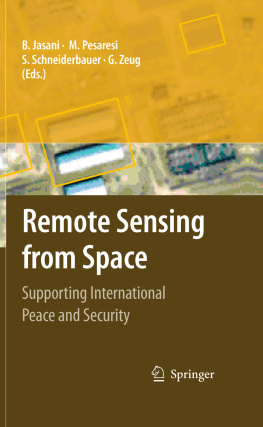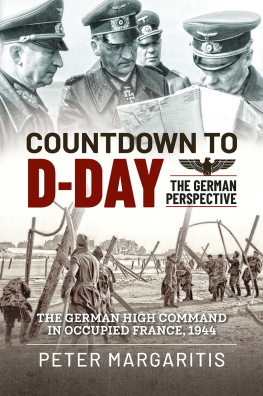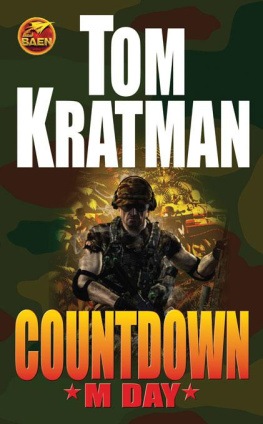ROUTLEDGE LIBRARY EDITIONS: NUCLEAR SECURITY
Volume 11
COUNTDOWN TO SPACE WAR
First published in 1984 by Taylor & Francis Ltd
This edition first published in 2021
by Routledge
2 Park Square, Milton Park, Abingdon, Oxon OX14 4RN
and by Routledge
52 Vanderbilt Avenue, New York, NY 10017
Routledge is an imprint of the Taylor & Francis Group, an informa business
1984 Stockholm International Peace Research Institute
All rights reserved. No part of this book may be reprinted or reproduced or utilised in any form or by any electronic, mechanical, or other means, now known or hereafter invented, including photocopying and recording, or in any information storage or retrieval system, without permission in writing from the publishers.
Trademark notice: Product or corporate names may be trademarks or registered trademarks, and are used only for identification and explanation without intent to infringe.
British Library Cataloguing in Publication Data
A catalogue record for this book is available from the British Library
ISBN: 978-0-367-50682-7 (Set)
ISBN: 978-1-00-309763-1 (Set) (ebk)
ISBN: 978-0-367-53301-4 (Volume 11) (hbk)
ISBN: 978-1-00-308134-0 (Volume 11) (ebk)
Publishers Note
The publisher has gone to great lengths to ensure the quality of this reprint but points out that some imperfections in the original copies may be apparent.
Disclaimer
The publisher has made every effort to trace copyright holders and would welcome correspondence from those they have been unable to trace.
Countdown to Space War
Bhupendra Jasani
Christopher Lee
sipri
Stockholm International Peace Research Institute
UK Taylor & Francis Ltd, 4 John St, London WC1N 2ET
USA Taylor & Francis Inc., 242 Cherry St, Philadelphia, PA 19106-1906
Copyright SIPRI 1984
All rights reserved. No part of this publication may be reproduced, stored in a retrieval system, or transmitted, in any form or by any means, electronic, electrostatic, magnetic tape, mechanical, photocopying, recording or otherwise, without the prior permission of the copyright owner and publishers.
British Library Cataloguing in Publication Data
Jasani, Bhupendra
Countdown to space war.
1. Space warfare
I. Title. II. Lee, Christopher, 1941-
358.8 UG1530
ISBN 0-85066-261-3
Typesetting by Mathematical Composition Setters, Ivy Street, Salisbury, UK
Printed in Great Britain by Taylor & Francis (Printers) Ltd, Basingstoke, Hants.
Contents
sipri
Stockholm International Peace Research Institute
SIPRI is an independent institute for research into problems of peace and conflict, especially those of arms control and disarmament. It was established in 1966 to commemorate Swedens 150 years of unbroken peace.
The institute is financed by the Swedish Parliament. The staff, the Governing Board and the Scientific Council are international.
Governing Board
Rolf Bjrnerstedt, Chairman (Sweden)
Egon Bahr (FR Germany)
Francesco Calogero (Italy)
Tim Greve (Norway)
Max Jakobson (Finland)
Karlheinz Lohs
(German Democratic Republic)
Emma Rothschild (United Kingdom)
The Director
Director
Frank Blackaby (United Kingdom)
sipri
Stockholm International Peace Research Institute
Bergshamra, S-171 73 Solna, Sweden
Cable: Peaceresearch, Stockholm
Telephone: 08-55 97 00
President Reagan made a speech on 23 March 1983 that became known as his Star Wars speech. In it, he called on scientists and engineers to find the means of rendering nuclear weapons impotent and obsolete. The President was musing on the changes of using the considerable research into beam weapons and space systems as a counter to intercontinental ballistic missiles. Some dismissed Mr Reagans speech as fantasy. However, what is not generally appreciated is the extent and the speed with which outer space has been put to military use.
Earth orbiting satellites are invaluable in the enhanced performance of armed forces and weapons. From 1958 to 1983 2114 military orientated satellites were launched. Seventy five per cent of all satellites have some direct military use. Their missions range from navigation, communications, meteorology and geodosy to surveillance.
Once the superpowers recognized the military value of satellites they immediately went about developing an^-satellite weapons.
At the same time, military satellites do have peaceful uses. They monitor potential enemies and therefore help maintain some form of uncertain stability. Indeed the major arms control treaties have clauses in them which allow for satellites to monitor areas where there could be violations of treaties.
Literature on such issues as anti-satellite weapons and space systems is starting to trickle from strategic and technical bodies. Yet most are written and presented for a reasonably informed audience. There is a need to reach a wider audience that does not have the technical nor the strategic understanding of the issues involved. That same technical and strategic understanding can be translated into simpler language and the issues explained. The authors, therefore hope that this book will help more people to understand the complex problems of the extension of the arms race to outer space and its control.
Acknowledgement
The editorial assistance of Gillian Stanbridge is gratefully acknowledged.
Bhupendendra Jasani
Christopher Lee
Stockholm
September 1984
1.
Countdown to crisis
If the two superpowers go to war any time after, say, 1990, it is very likely that the war would start in space. The military use of outer space is so far advanced that by around 1990 both the United States and the Soviet Union will have sure means of damaging and perhaps destroying some of the satellites that would be crucial to commanders on either side. The Soviet Union may already have this capability. The United States appears confident that its current anti-satellite (ASAT) test programme will give it an ASAT weapon within the time scale that we are viewing.
The development of ASAT weapons started in the late 1950s. The need for them was apparent to the military in Moscow and Washington once it was seen that space flight was a reality and that the exchequers in both capitals were willing to support this modern form of exploration. Today, less than 30 years after the first Sputnik, the military commander has come to accept space as a legitimate environment into which he might extend his defence systems. About 75 per cent of satellites have some military application. They are used for spying, for sending and intercepting signals, as early warning systems and, in the case of the Soviet Union, are capable of hunting down and destroying spacecraft that could give an enemy too much of an advantage during wartime. It is not long since talk of orbital Big Brothers and hunter-killer satellites and beam weapons was considered to be the realm of fantasy. It was something for fireside reading and big-budget movies, stretching the imagination to the limit.


